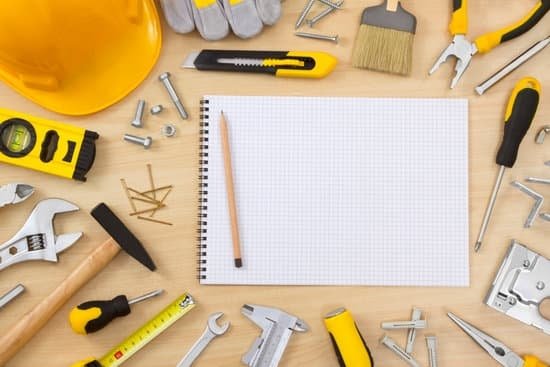Introduction
Safety Push Blocks are an indispensable tool for woodworking professionals and hobbyists. They are designed to easily and securely move large pieces of wood along rip saws, joiners, planers, shapers, and other machines, as well as manually operated tools like routers. Safety Push Blocks act as a barrier between the user’s hand and the cutting edge of the tool, thus preventing accidental cuts. They also help guide the material being worked on accurately for cleaner cuts.
Safety Push Blocks come in different sizes and styles that can accommodate different materials and blade sizes. The conventional rectangular style is suitable for softwoods like pine or poplar, while oval-shaped designs with grooves are excellent for even pressure on harder woods. There are also specialty models designed for seamless work when shaping irregular surfaces such as end grain. All models have a comfortable handle area with strong grip material to ensure that they stay firmly in place while you work. Each block is reinforced with metal bracings or ribs which further ensure safety and stability.
While using safety push blocks you must make sure that they are passed over the edge of the cutting device rather than pushed sideways across it—this reduces arm strain while providing accurate control over your material’s movement. Additionally, make sure to wipe them down after each use in order to remove any debris or sawdust that may compromise its secure placement next time you need it. Proper maintenance and care will ensure safe performance of these invaluable tools for many years to come!
Advantages of Using Safety Push Blocks
Using safety push blocks for woodworking projects is the best way to stay safe, especially when using more dangerous power tools. Push blocks provide a secure and stable platform when cutting or shaping your materials. This reduces the risk of injury from kickback, splinters, and chips that may otherwise occur when machining by hand. Furthermore, they provide additional control of the material which results in more consistent and accurate cuts or shapes. Safety push blocks are also easily adjustable depending on the shape and size of whatever material you are working on, ensuring a tight grip and maximum maneuverability. Additionally, because they grip firmly onto the work surface, it increases the speed at which you can work with less force required.
Key Features of Different Types of Safety Push Blocks
Woodworking safety push blocks are designed to provide the experienced or novice woodworker with necessary safety measures when dealing with smaller pieces of wood. Utilizing a safety push block is essential in order to protect oneself from sharp edges, router blades or splinters, as pushing small cuttings can be dangerous without them. Push blocks come in various shapes and sizes, each offering different key features.
The most common types have handles on either side, making them easy to grab and maneuver while guiding the wood through the machine. Additionally, these handles often feature rubber grips which allow for greater control and improved accuracy while using a router or other tool. Another type of safety push block has detachable legs or suction cups on the bottom side; allowing it to be picked up easily when finished and enabling it to stay in place during use on curved shapes of wood. There are also accurate measuring devices available for use with push blocks that allow items such as hinges and joints to be placed precisely where they need to go. The last main variation is foam grip push blocks which are similar to standard models but include an ergonomic foam layer for better comfort during prolonged projects.
Assessing the Risks of Push Block Woodworking
When woodworking, the safe use of a push block can help to avoid dangerous situations. Push blocks are hand-held tools made from plastic or metal that guard the hands and fingers from injury as material is cut. This reduces the risk of losing control of the materials or machines, as well as eliminates unnecessary risks that could lead to accidents on the job. To effectively assess the safety of your work environment, you should consider some additional factors related to push block use:
• Make sure that all guards are in place and adequately secured before operating any machine. Ensure that all equipment is properly maintained according to safety regulations.
• Check for loose screws, nuts, broken parts or other hazards before using any equipment and make sure all fasteners are tight before starting.
• Be aware of materials size when cutting with a push block—the tool should be appropriate for the size and weight of what you’re working with so that it doesn’t become unsteady or slip out of control.
• Consider where your workpieces are positioned—ensure there is ample space between yourself and any moving objects to avoid contact with sharp edges or becoming entangled in machinery.
• Use caution when adjusting settings on machinery—doing so while a machine is running presents serious risks, such as having your clothing caught up in blades.
By assessing these risks and taking proper precautions when using push blocks in woodworking projects, operators can ensure they stay safe while achieving their desired results.
Prioritizing Your Safety Before Choosing a Push Block
Before selecting a push block for woodworking, it is important to prioritize safety. Every item you use for woodworking has the potential to cause serious harm to yourself or others around you, so making wise decisions and being aware at all times is essential. When selecting a push block, it is important to look for one that is made from quality materials such as hard plastic or metal. Avoid any push blocks that are made from soft materials like foam or rubber which may have easily punctured or ripped surfaces. Additionally, be sure to inspect the edges of the block: they should be smoothly finished and free of rough areas which can snag on clothing or cut skin. Finally, the push block should be sized correctly for the job and allow you easy access and control over the workpiece while minimizing your risk of injury due to a miscut piece. With these tips in mind, you can confidently choose a safe push block for your next woodworking project!
Exploring Different Types of Safety Push Blocks
Safety push blocks are one of the most important tools any woodworker can have in his workshop. These handy devices ensure that woodworking projects remain safe and sound while being handled, cutting, and shaping with power tools. There are various types of safety push blocks available to the average consumer. The two main categories of these devices are plastic and wooden models.
Plastic push blocks feature a non-slip grip made from several layers of rubber or other soft material. They come in a variety of shapes, sizes, and colors and provide excellent safety features for any level of experience. One common type is the adjustable pusher block which allows users to easily adjust it for larger or thinner pieces of wood.
On the other hand, wooden push blocks offer an elegant look and feel to any workspace. Made from strong hardwoods, they feature embedded magnets which keep them securely attached to any surface during use. In addition, they come with a carved handle making it easy to pick them up as needed. Wooden models typically look much nicer than their plastic counterparts and won’t require much maintenance over time either.
Aside from standard push blocks, there are also some unique products like the low friction safety rail or even the sliding clamping arm. These gadgets allow users to safely guide circular saws through materials without having to worry about movement in the tool or scarring on the material itself. This opens up new possibilities for creativity when using such tools around your workshop!
Essential Safety Practices for Using Push Blocks in Woodworking
Push blocks are an important tool in working with wood, keeping hands away from the blade and allowing for accurate guidance. To remain safe while using push blocks, several precautions should be taken:
• Wear appropriate safety gear when woodworking. This includes wearing protective eyewear, preferably goggles or glasses with side shields, and gloves.
• Always ensure that your push block is securely attached to the workpiece before you place it in a saw or other power tool. Inspect your tools regularly to make sure they are in good condition, free of any defects that might cause a safety hazard while in use.
• Use the proper size push block for each project and make sure it’s firmly held down and visable before operating a router, table saw or drill press.
• Position yourself safely around power tools at all times so that your arms and body will not become entangled if the piece slips unexpectedly.
• Never hold your left hand below the blade of a circular saw and ensure your fingers are always away from the cutting path of all saws, routers and drills.
• Disengage the machine power before making adjustments or removal of waste material near blades or bits. Make sure that the material being cut is firmly secured against the fence or table before engaging power and pushing through for cuts or bevels.
Reflection
Safety push blocks are an invaluable tool for any woodworking enthusiast. They provide an extra layer of protection from the spinning blades and moving parts that many of us use on a daily basis in our shops. By using push blocks, we can focus more on the project at hand instead of worrying about potential accidents that could occur due to mistakes or negligence with process safety.
Beyond their obvious safety advantages, push blocks have been proven to improve the accuracy of cuts. By giving woodworkers a better sense of control, they are able to produce even better results while avoiding hazards such as kickbacks and tear-out. As such, it is a beneficial purchase for anyone who regularly uses items like jointers and routers during their craft.
Furthermore, they can often be used across multiple types of machinery or projects when features or stock pieces require different cutting angles or depths. This versatility allows you to use fewer tools in your arsenal while keeping your shop organized and ready for the next project no matter what it may be. It also saves time because you will not need to look for alternative options every time you switch out equipment on your workbench.
Overall, safety push blocks represent an important piece in any serious hobbyist’s collection – both from a safety perspective as well as from an efficiency one. Having them nearby will ensure that your cuts are precise without having to worry about slip-ups or injury along the way. Take my advice: always keep some handy in your shop!

Hi everyone! I’m a woodworker and blogger, and this is my woodworking blog. In my blog, I share tips and tricks for woodworkers of all skill levels, as well as project ideas that you can try yourself.





